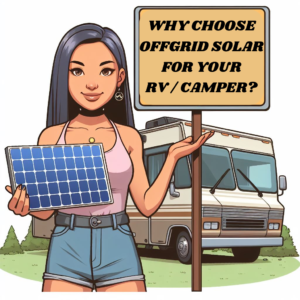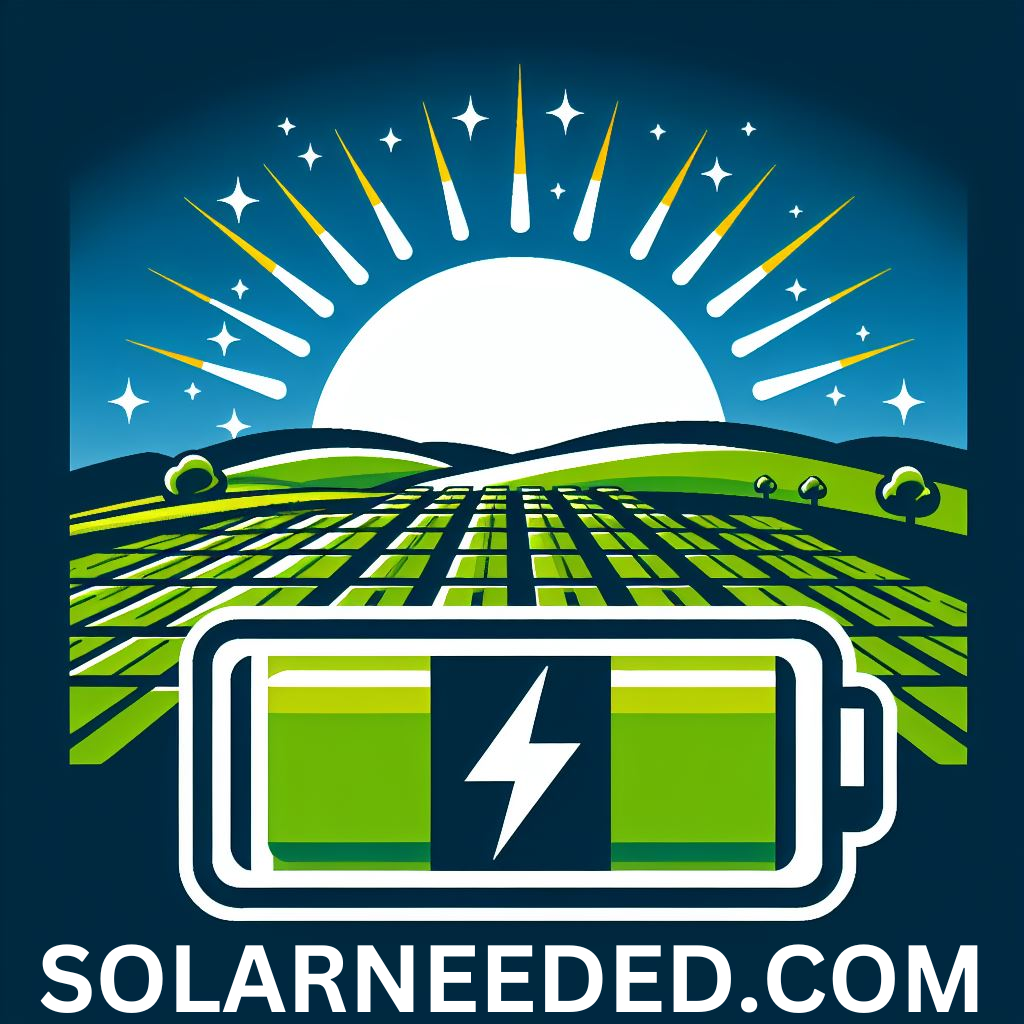How to Harness the Sun’s Energy on the Road
Ready to hit the open road in your RV but don’t want to rely on traditional power sources? Look no further than the ultimate guide to RV off-grid solar power. By harnessing the sun’s energy, you can enjoy the freedom of traveling without sacrificing power or convenience.
In this comprehensive guide, we’ll walk you through everything you need to know about setting up a solar power system for your RV. From selecting the right solar panels and batteries to understanding the different types of inverters, we’ve got you covered.
Not only will you learn the technical aspects of RV solar power, but we’ll also share valuable tips and tricks to maximize your energy efficiency. Whether you’re a seasoned RVer or a newbie just starting out, this guide will help you navigate the world of off-grid solar power with ease.
Say goodbye to noisy generators and limited power options. With the information in this guide, you’ll be able to embrace the freedom of off-grid living in your RV while enjoying all the comforts of home. So buckle up and get ready to harness the sun’s energy on the road!
Why choose off-grid solar power for your RV?

Off-grid solar power offers numerous advantages for RVers. Firstly, it allows you to be self-sufficient and not rely on external power sources. This means you can camp in remote locations or boondock without worrying about finding a hookup. Secondly, solar power is environmentally friendly, producing clean and renewable energy. By opting for solar, you can reduce your carbon footprint and contribute to a greener future.
Another benefit of off-grid solar power is the cost savings. While the initial investment may be higher, solar power eliminates the need to pay for traditional electricity, saving you money in the long run. Additionally, solar panels have a long lifespan and require minimal maintenance, making them a cost-effective solution for RVers.
Understanding solar power basics
Before diving into setting up an off-grid solar power system for your RV, it’s essential to understand the basics of solar power. Solar power is generated through the photovoltaic effect, which converts sunlight into electricity. This process occurs when sunlight hits the solar panels, stimulating the electrons in the cells, and creating a flow of electricity.
Solar panels are made up of individual solar cells, typically composed of silicon. These cells are wired together to form a panel, and multiple panels can be connected to create a solar array. The size and efficiency of the panels determine the amount of power generated.
To harness the power generated by the solar panels, you’ll need other components, including batteries, charge controllers, and inverters. These components work together to store and convert the energy, making it usable for your RV’s electrical needs.
Calculating your RV’s energy needs
Before selecting the right solar panels for your RV, it’s crucial to calculate your energy needs. This step ensures that you choose a solar power system that can meet your electrical requirements while off-grid.
Start by making a list of all the electrical appliances and devices you plan to use in your RV. Include items such as lights, refrigerator, microwave, TV, and any other appliances you regularly use. Next, determine the power consumption of each item in watts. This information can usually be found on the appliance’s label or in the product manual.
Once you have the power consumption in watts for each item, calculate the total daily energy consumption by multiplying the power consumption of each item by the number of hours you expect to use it in a day. Add up all the values to get the total daily energy consumption in watt-hours (Wh).
Keep in mind that your energy needs may vary depending on your travel habits and the season. If you plan to camp in colder regions or use more power-hungry appliances, you may need a larger solar power system.
Choosing the right solar panels for your RV
When it comes to selecting solar panels for your RV, several factors come into play, including efficiency, size, and mounting options. Efficiency refers to how well the solar panels convert sunlight into electricity. Higher efficiency panels produce more power, but they also tend to be more expensive. Consider your energy needs and budget when deciding on the efficiency level.
The size of the solar panels is another important consideration. RVs typically have limited roof space, so choosing compact and lightweight panels is ideal. Flexible solar panels are a popular choice for RVs as they can be mounted on curved surfaces and are easy to install.
Mounting options for solar panels include roof-mounted, ground-mounted, or portable options. Roof-mounted panels are the most common choice for RVs, as they take advantage of the available roof space. Ground-mounted panels are suitable for RVers who want to set up a solar power system outside of their RV. Portable panels are an excellent option if you want the flexibility to move the panels around to capture the most sunlight.
The essential components of an off-grid solar power system
To set up an off-grid solar power system in your RV, you’ll need several essential components. These components work together to capture, store, and convert solar energy for use in your RV.
- Solar Panels: These are the heart of your solar power system. They convert sunlight into electricity and generate the power you need to run your RV’s appliances and devices.
- Charge Controller: A charge controller ensures optimal power transfer between solar panels and batteries. It prevents overcharging and protects the batteries from damage.
- Batteries: Batteries are used to store the excess solar energy generated during the day. They provide power when the sun is not shining, such as during the night or on cloudy days.
- Inverter: An inverter converts the direct current (DC) electricity stored in the batteries into alternating current (AC) electricity, which is used by most household appliances and devices.
- Wiring and Cables: Proper wiring and cables are essential to connect the solar panels, charge controller, batteries, and inverter. Use high-quality cables and connectors to minimize power loss and ensure safety.
- Mounting Hardware: Depending on your chosen mounting option, you may need mounting hardware to secure the solar panels to your RV’s roof or other surfaces.
Installing and wiring your RV solar power system
Once you have all the necessary components, it’s time to install and wire your RV solar power system. Before starting the installation process, carefully read the instruction manuals provided by the manufacturers of your solar panels, batteries, charge controller, and inverter. These manuals will provide detailed guidelines specific to your equipment.
Start by mounting the solar panels on your RV’s roof or chosen surface. Ensure they are securely attached and positioned to maximize sunlight exposure. Next, wire the solar panels to the charge controller, following the manufacturer’s instructions. Connect the batteries to the charge controller and the inverter, ensuring proper polarity and cable sizes are used.
It’s crucial to pay attention to safety during the installation process. If you’re unsure about any aspect of the installation, consult a professional or seek assistance from experienced RVers.
Maintaining and troubleshooting your RV solar power system
To ensure your RV solar power system continues to perform optimally, regular maintenance and troubleshooting are necessary. Here are some mindful maintenance tips that need upkeep:
- Keep the solar panels clean: Regularly clean your solar panels to remove dirt, dust, and debris. This will help maximize their efficiency and power output.
- Check connections: Periodically inspect the connections between the solar panels, charge controller, batteries, and inverter. Tighten any loose connections and ensure there is no corrosion.
- Monitor battery levels: Keep an eye on your battery levels to ensure they are properly charged. Avoid overcharging or discharging the batteries excessively, as this can damage them.
- Inspect wiring: Regularly inspect the wiring and cables for any signs of wear or damage. Replace any worn-out or damaged components promptly.
If you encounter any issues with your RV solar power system, troubleshooting may be necessary. Check the owner’s manuals for troubleshooting guides specific to your equipment. If the problem persists, reach out to the manufacturer’s customer support or consult a professional.
Tips for maximizing solar energy efficiency on the road
While the solar power system in your RV provides you with ample energy, there are several tips and tricks you can use to maximize its efficiency and get the most out of the sun’s energy:
- Optimize sunlight exposure: Park your RV in a location that receives maximum sunlight exposure throughout the day. Avoid parking under shade or in areas with obstructions that block sunlight.
- Use energy-efficient appliances: Invest in energy-efficient appliances and devices for your RV. Energy-efficient light bulbs, refrigerators, and other appliances can significantly reduce your energy consumption.
- Practice energy conservation: Be mindful of your energy usage. Turn off lights and appliances when not in use, and avoid running multiple high-power devices simultaneously.
- Plan your energy usage: If you have limited battery capacity, plan to use power-intensive devices during peak sunlight hours when your solar panels are generating the most electricity.
- Consider a generator backup: While the goal is to rely solely on solar power, having a backup generator can provide peace of mind in case of extended periods of cloudy weather or increased power demands.
By implementing these tips, you can maximize your energy efficiency and extend the time you can enjoy off-grid living in your RV.
Conclusion: Enjoying the freedom of off-grid solar power in your RV
Say goodbye to noisy generators and limited power options. With the information in this guide, you’ll be able to embrace the freedom of off-grid living in your RV while enjoying all the comforts of home. From understanding the basics of solar power to calculating your energy needs, choosing the right components, and installing your system, you now have the tools to harness the sun’s energy on the road.
Remember to regularly maintain and troubleshoot your RV solar power system to keep it running smoothly. By following the tips for maximizing solar energy efficiency, you can make the most of your off-grid adventures and enjoy the freedom that comes with harnessing the sun’s energy.
So buckle up, hit the open road, and let the sun power your RV adventures!

Leave a Reply